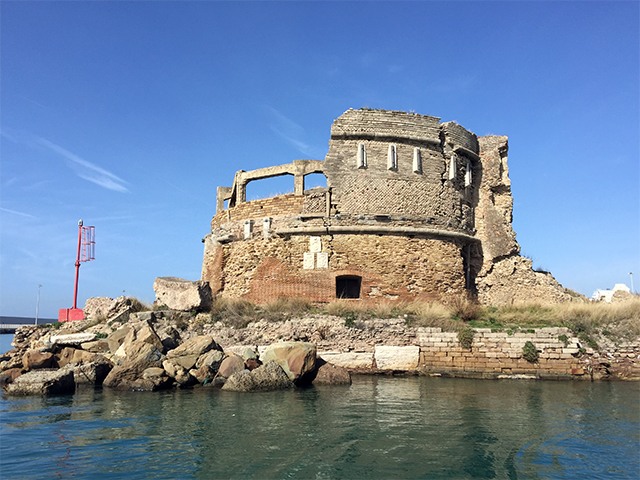From Japan to Civitavecchia: Hasekura Tsunenaga's trip
The story of the great journey of Hasekura Tsunenaga: from the martyrdom of the first Japanese Christians to the twinning of Civitavecchia with the city of Ishinomaki.Hasekura Tsunenaga (1571 - 7 August 1622) was a relevant Japanese samurai at the service of Date Masamune, daimyo of Sendai, famous for leading many delegations that took him travelling all around the world.
In 1615, during a mission aimed to meet Pope Paul V in Rome, the ambassador disembarked at the Port of Civitavecchia, where he stayed for about two weeks over which he made friends with the citizens. For this reason, Civitavecchia and the Japanese city of Ishinomaki are to date twin cities.
From this port city starts the samurai's extraordinary trip, which we are ready to tell in words of Roberta Galletta, historian of Civitavecchia and author of the book "La Darsena Romana - Il porticciolo di Civitavecchia" ("Roman Harbour - Small Tourist Port of Civitavecchia")
THE GREAT JOURNEY OF HASEKURA TSUNEGAGA
On October 18, 1615, by the time of the Papal State Port, Hasekura Rokuemon Tsunenaga disembarked at Civitavecchia after a long journey that had begun on October 28, 1613 from the port of Ishinomaki. Two long years of navigation during which the samurai crossed two oceans, the Pacific and the Atlantic, with the aim to meet in Rome Pope Paul V.
The samurai, who was born in Japan in 1571, before undertaking this long and important diplomatic action in Europe (1615-1620), which has its starting from its landing in Civitavecchia, had already led an embassy in Mexico.
Accompanied by Spanish Father Sotelo and from 15 other delegates, Tsunenaga was warmly welcomed by the authorities and the citizens of Civitavecchia. Then he left again, after two weeks of stay in the city, this time for Rome.
This trip represented the only diplomatic and political response, during the years of the great navigations, of East Asia towards the West.
On 3 November, the Japanese delegation was finally received by the Pope in the Vatican to bring a message from Date Masamune, delivered to the pontiff by Hasekura in person. The letter, preciously decorated with gold, asked Paul V to open a trade treaty between Japan and Mexico and to send Christian missionaries to his kingdom.
The Pope agreed to send missionaries, but left the decision of the trade treaty to the king of Spain, being the economic issue too thorny in those years of great commercial expansion.
The proof of the collaboration is reported in a letter that Paul V wrote to the Date Masamune, of which a copy is preserved in the Vatican.
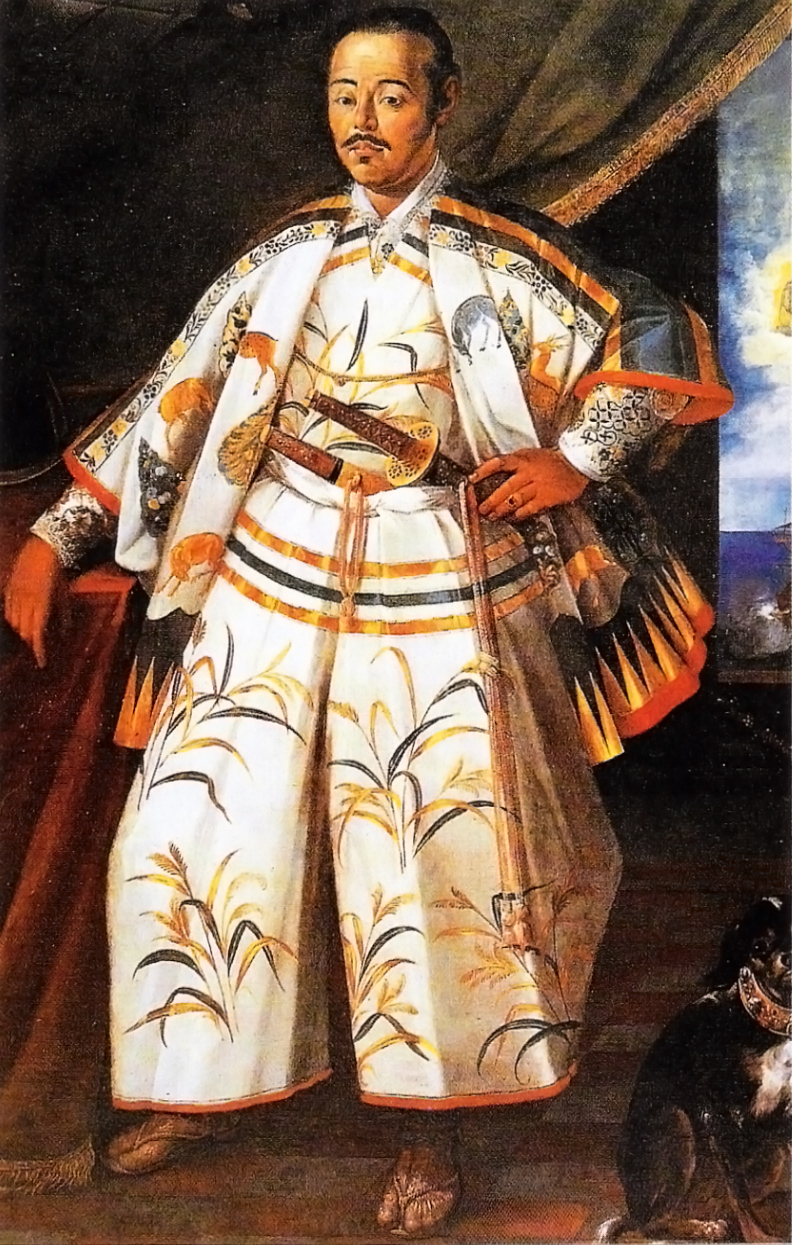
Portrait from 1615 of Hasekura Tsunegaga in Rome
The Japanese were the first Asian country to officially enter the city symbol of Christianity. They remained in Rome until January 4, 1616, and then they left to return to Japan, bringing back to their country a part of Civitavecchia and its harbor.
The importance of this episode is brought to light by the twinning of Civitavecchia with the city of Ishinomaki in 1971, in honor of the old friendship that binds the two port towns, so distant and yet so close.
A statue dedicated to samurai Hasekura Tsunenaga is located in Viale Guglielmo Marconi near Porta Livorno, a monumental passage that connects the city with its port.
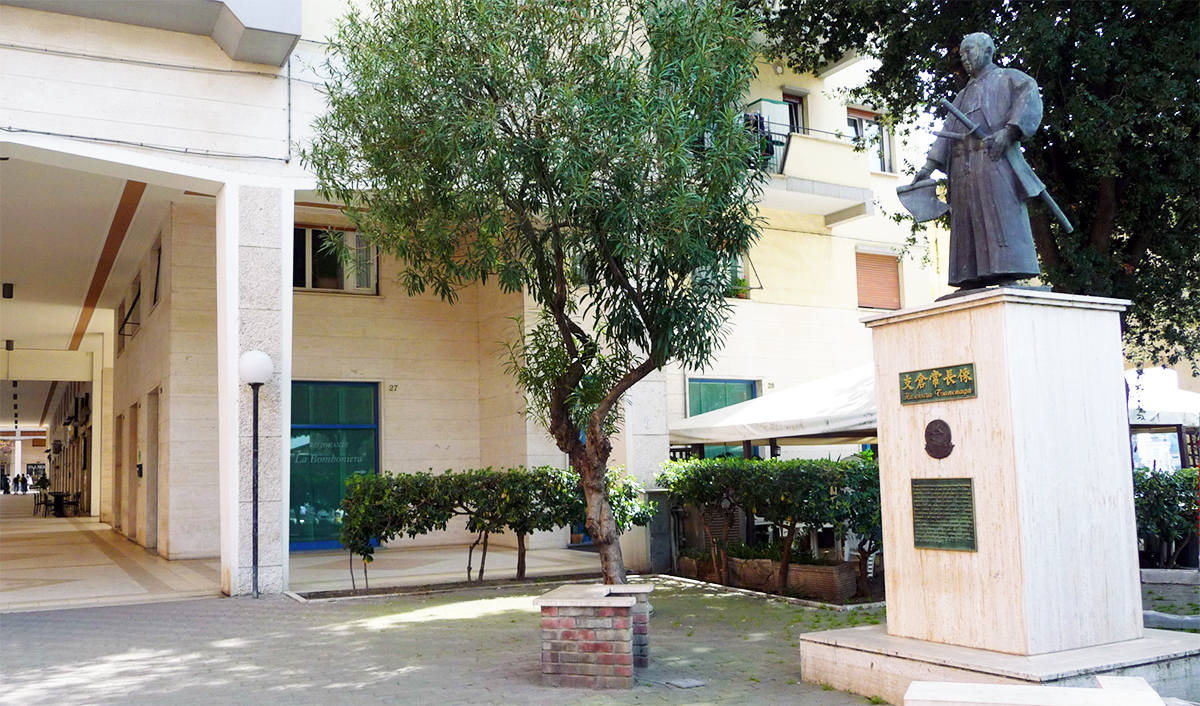
The statue dedicated to samurai Hasekura Tsunenaga is located in Viale Guglielmo Marconi close to Porta Livorno
MARTYRDOM OF THE FIRST JAPANESE CHRISTIANS
The journey was also a chance to heal a relationship between two different and far away worlds that was born hardly in 1549 and culminated in the tragedy of 26 Japanese martyrs killed in 1597.
To understand this we have to take a step back to 1549, the year in which the Jesuit fathers, led by Saint Francis Xavier, departed from Italy to Japan to convert to Christianity the Japanese population. The mission succeeded to convert so many people, that the locals were irritated (about 300,000 faithful already in 1587 mainly in Nagasaki).
The shogun of the Japanese crown emanated then a deportation order against the jesuits, representing the only religious Christian order in Japan.
When in 1593 arrived to Japan also the Franciscan friars, implementing a public evangelism without prudence, the story got complicated causing an even harder reaction of the shogun. He ordered on 9 December 1596 to arrest Franciscans, Jesuits and neophytes Japanese Christians. It turned into a martyrdom of 26 Christians, whose crucifixion took place on 5 February 1597.
In memory of the tragedy of the Christian martyrs and the strong bond that Civitavecchia has with Japan, the city has dedicated a church to the Japanese Martyrs, located between Viale della Vittoria and Via Italo Stegher.
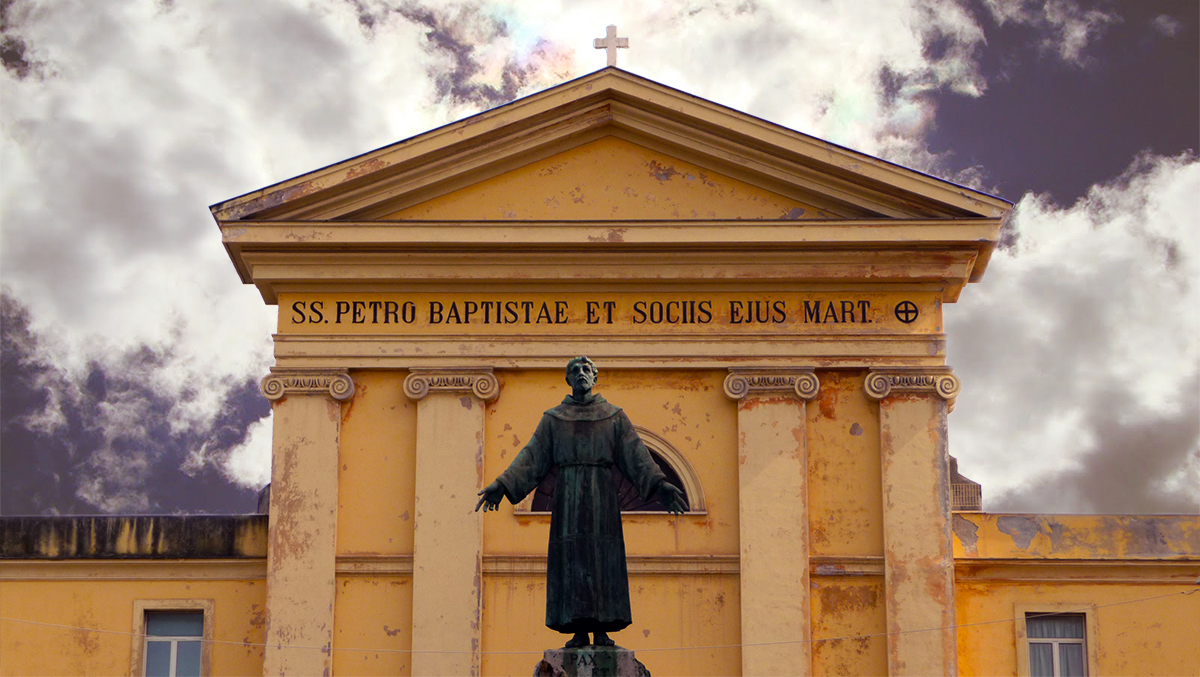
The Church of the Japanese Martyrs in Civitavecchia
The inside of the building, consecrated in 1862, after its reconstruction followed the devastations of bombings in 1943-44, is frescoed, with images that remind us of the history of the Japanese martyrs between 1951 and 1954, by the famous Japanese painter Luca Hasegawa.

Madonna with the Kimono - Particular of the Church of the Japanese Martyrs in Civitavecchia
In the center of vault of the apse, between Saint Francis Xavier and St. Francis of Assisi, is depicted the Madonna with the Kimono, while at the sides of the apse Hasegawa wanted to pay tribute to Santa Fermina, patroness of Civitavecchia, by putting her in front of the samurai Hasekura Tsunenaga, the first Japanese ambassador in Europe, to symbolize the strong bond between the East and the West and between the two cities of Ishinomaki and Civitavecchia.
SOME CURIOSITIES'
Few know that in one of the rooms of the Quirinal, more precisely inside of the Sala dei Corazzieri, in a lunette of the ceiling is a marvelous frescoed painting depicting our Hasekura Tsunenaga, in the company of other members of the Japanese delegation and Father Sotelo.
The marvelous painting, commissioned by Pope Paul V himself, pays homage to the visit of the samurai ambassador. It was created by the Roman Baroque painter Giovanni Lanfranco, who was a pupil of Caracci.
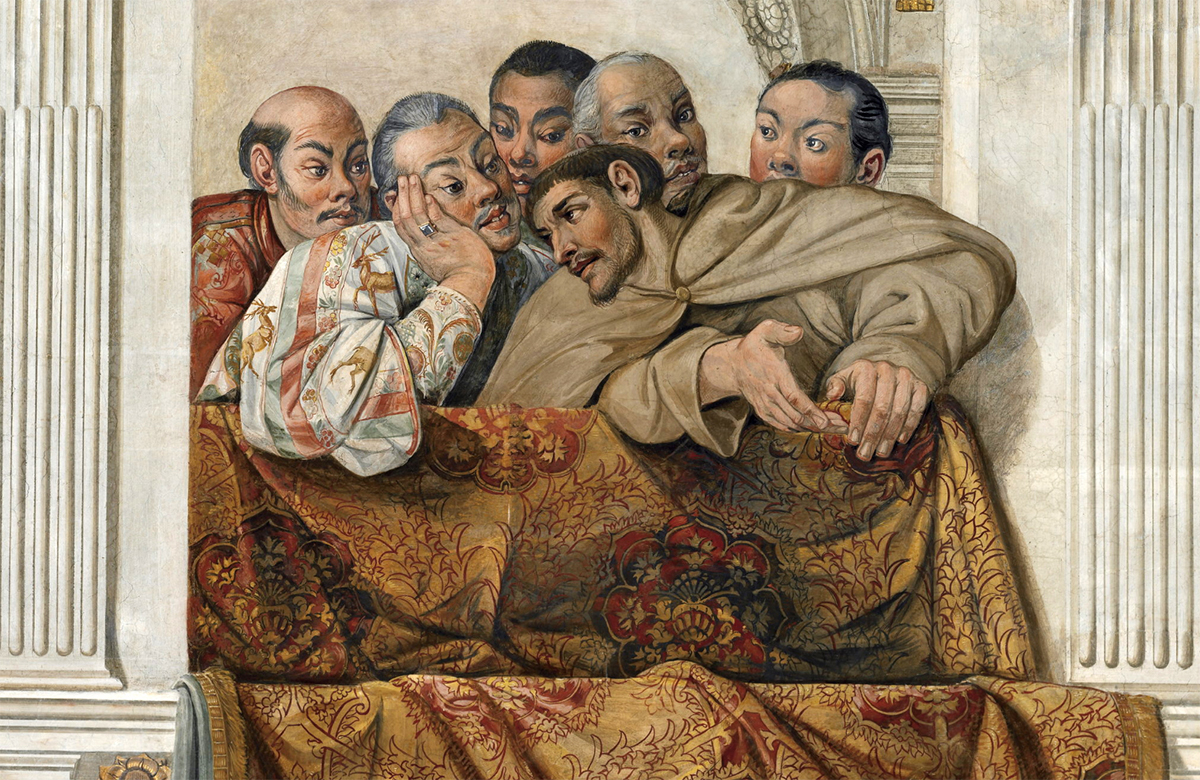
Particular of the painting portrarying the delegation of Hasekura Tsunenaga - Quirinal, Salone dei Corrazzieri
by Roberta Galletta
*from "La Darsena Romana-Il Porticciolo di Civitavecchia" di Roberta Galletta.
Civitavecchia, 14 February 2014.



 PORT MOBILITY CIVITAVECCHIA
PORT MOBILITY CIVITAVECCHIA








